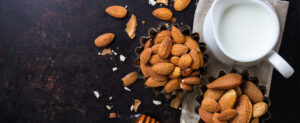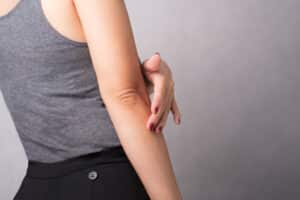
Osteoarthritis is the most common form of arthritis. The disease is caused by wear and tear on the articular cartilage, the tissue that covers the ends of the bones and helps move the joints. In advanced form, cartilage can disappear completely, leading to bone friction and bone remodeling.
Osteoarthritis occurs as a result of the gradual deterioration of the cartilage of the joints.
The cartilage is a hyaline tissue, alive, without blood vessels and without nerves, slippery, with a thickness of 2-3 mm, which allows the line of the joints to be lowered, by attenuating the frictional forces and shock absorption. If the cartilage is destroyed, the bone will rub directly on the bone.
Osteoarthritis can affect any joint, but it is more common in the joints that are more exposed to stress, such as hip or knee. Osteoarthritis is also found in the joints of the hand and the cervical region. Joint damage causes pain that generally increases with exertion and decreases with rest.
Symptoms often worsen by the end of the day. Although osteoarthritis is considered to be a condition of wear and tear that occurs with age, in reality the disease can occur at any age, even if it begins more frequently after age 50. It is more common among women.
Do not ignore the symptoms of chronic joint pain or stiffness of the joints – the sooner you get to the doctor, the sooner you will receive the diagnosis, the more treatment you will receive, and the better your quality of life. Osteoarthritis is a progressive condition, which includes 4 stages, where stage 0 means normal joint, and grade 4, severe osteoarthritis. The condition can stabilize before it reaches the last stage.
The structure of the articular cartilage is different compared to other tissues in the body; 95% of cartilage is a matrix of collagen fibers and special proteins (proteoglycans and other proteins), along wih water and only 5% cells – chondrocytes.
Chondrocytes are long-lived cells – similar to nerve cells and muscle cells that, due to the lack of blood vessels in the cartilage structure, feed by imbibition, absorbing nutrients, electrolytes and hydrating through the fluid in the intra-articular space.
The health and proper functioning of the articular cartilage depends on maintaining a good nutrition of the chondrocytes.
The mechanism that leads to osteoarthritis is not exactly known most of the time, but it can start with tissue damage due to overloading, an effort to which the joint is subjected, through a mechanical injury (for example a meniscus torsion) accompanied by the transmission of mediators of synovial inflammation in the cartilage, or due to a defect in cartilage metabolism.
Cartilage damage stimulates chondrocytes to repair the defect by producing extra proteoglycans and collagen, but also by stimulating enzymes that interfere with cartilage degradation and the production of inflammatory cytokines.
The excess of substances that mediate inflammation stimulates the inflammatory cycle through which the production of chondrocytes and synovial cells will be further stimulated, which will end up destroying the cartilage.
Once the cartilage is destroyed, the bone tissue becomes exposed and scleroses.
Attempts to repair bone tissue will lead to sclerosis and the appearance of osteophytes (small bony protrusions, “beaks”) that seem to appear as an attempt to stabilize the joint.
The synovial membrane becomes inflamed, it will produce more and more viscous fluid, the tendons and periarticular ligaments are affected, tendons or contractures appear, the muscles weaken.
Osteoarthritis usually occurs as a result of several risk factors. Among the factors that increase the risk of developing osteoarthritis are:
- Old age. The risk of developing osteoarthritis increases with age.
- Sexual orientation. Women are more at risk for osteoarthritis without knowing exactly why.
- Overweight, obesity. Excess weight contributes to osteoarthritis. Heavy weight is a stress on the hip and knee joints. Adipose tissue also produces proteins that can cause inflammation in and around the joints.
- Joint injuries. Some accidents, such as those caused by sports, can increase the risk of osteoarthritis. Even those that have occured many years ago and appear to have healed can cause osteoarthritis.
- Repeated joint stress. If, due to the nature of the job or sport you are practicing, you cause stress on your joints, you may develop osteoarthritis.
- Bone malformations. Some people have birth defects of bone or abnormal cartilage. Some metabolic diseases. These include diabetes and hemochromatosis, an inherited disease in which the body absorbs and stores too much iron. Osteoarthritis mainly affects the joints of the hands, neck, knees and hips.
- Spondylosis is the general name that refers to the degeneration of the spine, regardless of the causes that led to it. In the case of cervical spondylosis, you will feel specific symptoms, especially in the neck area, because it supports the weight of the head. Another type of spondylosis is lumbar, in which case the lower part of the spine is affected.
- Coxarthrosis is represented by the slow degradation, the irreversible progression of the articular cartilage from the hip.
- Gonarthrosis is osteoarthritis of the knee. Osteoarthritis of the knee is a consequence of the pressure exerted on the cartilage of the wrist (joint).
- Osteoarthritis of the shoulder is the degradation of cartilage inside the shoulder joint.
- Osteoarthritis of the finger joints, distal and proximal interphalangeal joints, causing nodules.
10 Early Signs of Osteoarthritis
1. Pain
Affected joints can hurt during or after movement. Pain is also felt when you apply pressure to the affected joint or area or when the joint is subjected to extra strain (for example, you need to support your body weight when you stand up).
If the knee joint is affected, even if only one of the knees is initially injured, over time the other knee will be affected (except when osteoarthritis occurs as a result of a knee injury). Pain occurs especially when you stand up, when you start walking or when you go up or down stairs.
If the hip is affected then the pain worsens when the joint is mobilized, but it can also affect you during sleep or periods of relaxation.
2. Stiffness
Stiffness of the joints is especially common when you wake up or after a period of inactivity. Usually, joint stiffness disappears after about 30 minutes of physical activity. Osteoarthritis of the hip affects the ability to make normal movements, you may find it difficult to put on your shoes or get in and out of the car.
3. Lack of flexibility
You cannot move your joint optimally during the movement that requires that joint. It is observed especially after periods of non-use of the respective joint.
4. Cracking sounds
You may feel the joint “crack” during movement. These sounds are caused by the bones rubbing against each other because there is not enough cartilage between them.
5. Inflammation of the joint
This can be caused by inflammation of the soft tissue surrounding the joint.
6. Bone spurs
The bone spurs are bony outgrowths formed on normal bone. Most people imagine something sharp when they think of a bony spur, but the bony spur is just an extra bone. It usually has a smooth surface, but it can wear out and cause pain if it presses or rubs against other bones or soft tissues such as ligaments and tendons in different parts of the body.
The most common locations of osteophytes are in the spine, shoulders, hands, hips, knees and legs.
7. Joints swelling
Swelling of the joints occurs when these tissues accumulate fluid, and these may be accompanied by pain and stiffness. You may also notice that the joint appears larger than normal or that its shape is somewhat irregular. When the joints swell, this can also be a symptom of a chronic condition or a sign of an injury that requires medical attention.
8. Location in the hands
The symptoms of osteoarthritis of the hands are different from one person to another. Many symptoms depend on the joints that are affected by the disease, and most people will experience: a pain when using their hands; joint stiffness, which may be more pronounced in the morning, difficulty moving fingers, the fact that you grab objects with too little force, swelling and tenderness of the fingers and around the wrists.
9. Decrease of the synovial fluid
Under normal conditions, a small amount of synovial fluid is found in the joints, enough to ensure the proper functioning of the joints. However, when the synovial fluid level decreases, swelling, numbness and joint pain appear.
The decrease of the synovial fluid or the change of its viscosity leads to the appearance of arthritis in all its forms, and here we mention rheumatoid arthritis, psoriatic arthritis, osteoarthritis and gout.
10. Joint enlargement
Joint enlargement is closely associated with joint effusion. The joint swells as fluid accumulation continues.
You might also like: 8 Foods to Avoid if You Have Arthritis






